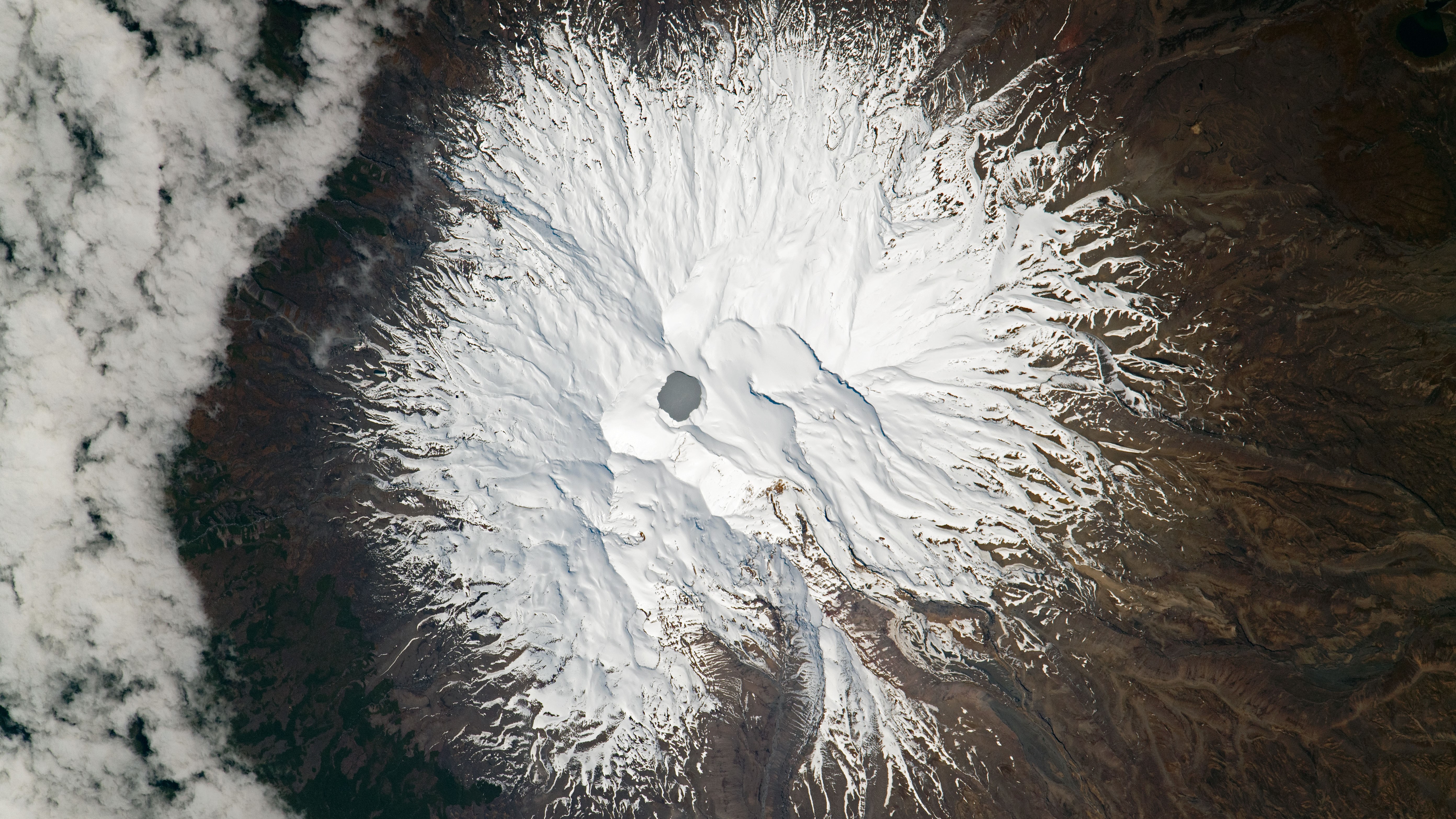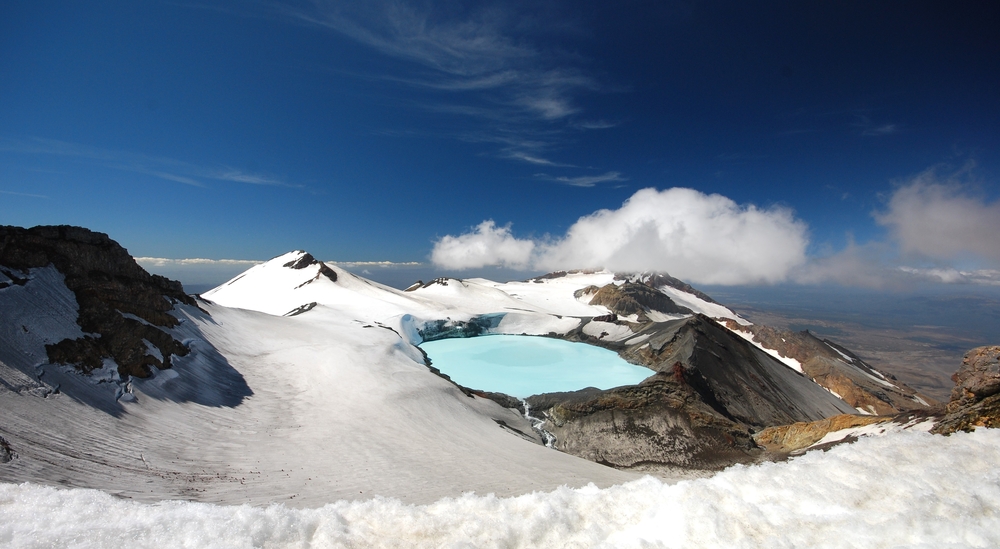Acid lake atop real-life 'Mount Doom' captured in striking new image from space station
An astronaut snapped the shot from the ISS.

An astronaut aboard the International Space Station (ISS) has snapped a stunning image of a snow-circled hydrothermal lake atop the real-life "Mount Doom" in New Zealand.
Mount Ruapehu, New Zealand's largest active volcano and the setting used to film Mount Doom in "The Lord of the Rings" movies, sits at the heart of Tongariro National Park, a UNESCO World Heritage Site located at the center of New Zealand's North Island. Other parts of the park were also used to portray the evil realm of Mordor in Peter Jackson's cinematic adaptation of J.R.R. Tolkien's fantasy epic.
An unidentified astronaut, who was part of the Expedition 65 crew on board the ISS, snapped the stunning new photo on Sept. 23, 2021, as the ISS passed over the volcano. The image was released online Sept. 18 this year by NASA's Earth Observatory.
The hydrothermal lake at the summit of Mount Ruapehu, known as Crater Lake, or Te Wai ā-moe, sits between the mountain's three main peaks, the tallest of which reaches 9,177 feet (2,797 meters) above sea level. A magma chamber deep within the volcano heats the lake, and as a result, the temperature of the lake fluctuates between 59 and 113 degrees Fahrenheit (15 and 45 degrees Celsius). The lake is also highly acidic, with a pH of less than 1, due to large amounts of volcanic gases that dissolve in the water, according to the Earth Observatory.
Related: 10 times volcanoes blew our minds in 2021
Crater Lake is important to geologists who monitor the volcano's threat level. The hydrothermal lake is the only accessible part of the volcanic system that researchers can study, and rapid temperature fluctuations in the water can reflect changes in the activity below the volcano's snowy peak.
In June, the alert level for Mount Ruapehu was increased from "minor volcanic unrest" to "moderate to heightened volcanic unrest," according to the geological hazard information website GeoNet, following a mini-swarm of earthquakes under the volcano. During this time, the temperature of the water in Crater Lake sharply increased to a peak temperature of 104 F (40 C).
Sign up for the Live Science daily newsletter now
Get the world’s most fascinating discoveries delivered straight to your inbox.

But the alert level was downgraded in July after the water temperature dropped to 75 F (24 C). Based on the temperature changes in the lake, experts believe the spike in activity was the result of a brief magma intrusion in the chamber below the volcano, according to the Earth Observatory.
This is not the first time that real-life volcanoes have been mixed up with fictional places from Middle-earth.
In 2021, researchers discovered the remains of a deep-sea caldera that belonged to a long-extinct underwater volcano. The team nicknamed the structure "Eye of Sauron" because of its resemblance to the all-seeing eye from "The Lord of The Rings."
Originally published on Live Science.

Harry is a U.K.-based senior staff writer at Live Science. He studied marine biology at the University of Exeter before training to become a journalist. He covers a wide range of topics including space exploration, planetary science, space weather, climate change, animal behavior and paleontology. His recent work on the solar maximum won "best space submission" at the 2024 Aerospace Media Awards and was shortlisted in the "top scoop" category at the NCTJ Awards for Excellence in 2023. He also writes Live Science's weekly Earth from space series.










